A paring knife can be a useful utensil for any kitchen, whether you are a professional chef or a casual cook. Although a paring knife has a signature short blade, the price tag is variable. This is common for kitchen cutlery. So, we have thoroughly researched, from affordable to pricy, what paring knives ought to cost you.
The cost of an ordinary paring knife ranges between $7 to $10 while higher-end knives can cost anywhere from $20 to over $100. Higher-end knives feature quality blades and handles. These pricier materials result in better durability and balance, essential qualities for any knife regarding safety and precision.
Although it is easy to purchase cheap paring knives, it is important to understand the purpose and limits of any blade you use in the kitchen. Keep reading to learn if you really need paring knives, how they are used, and how often, ideally, to replace them.
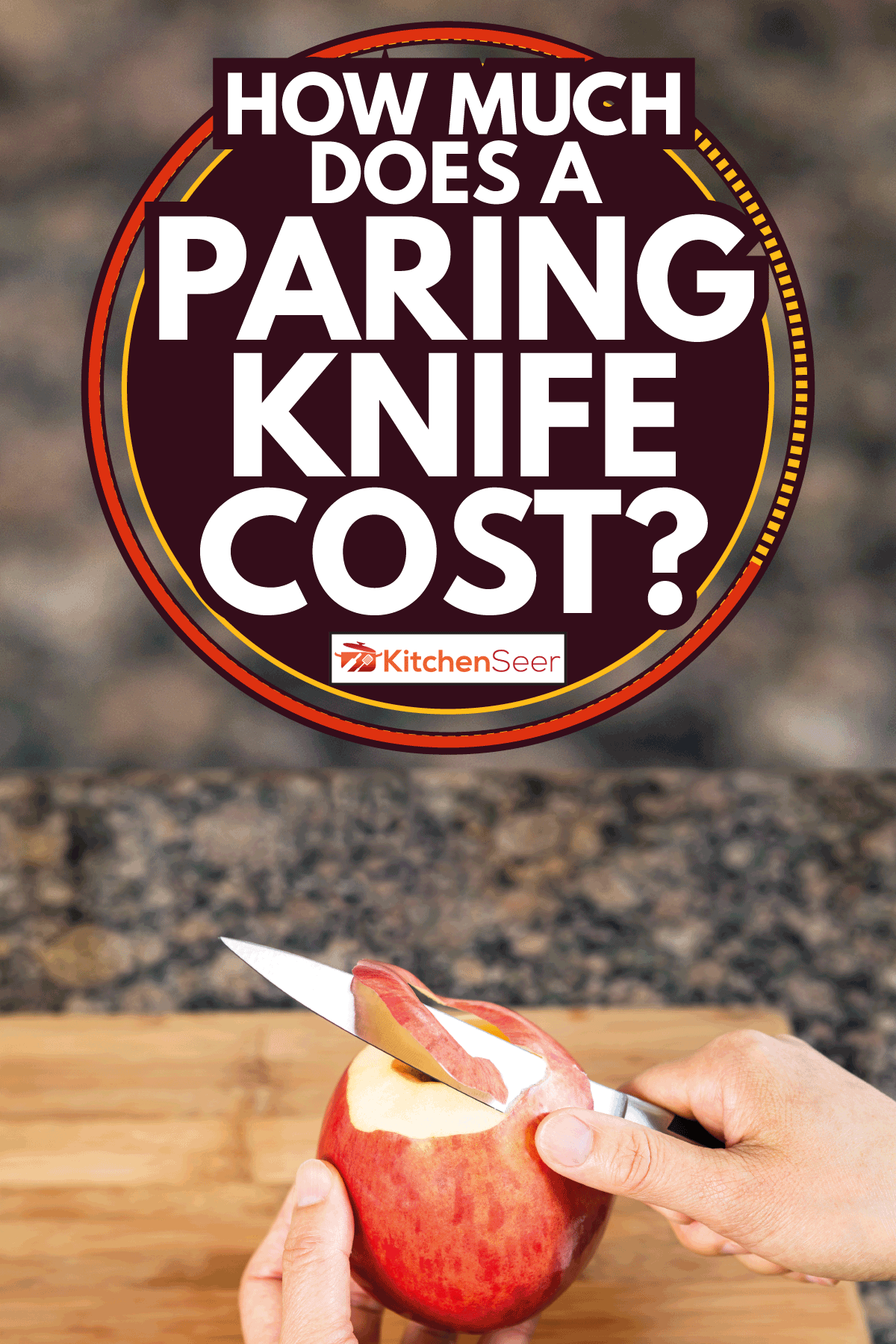
What would I mainly use a paring knife for?
Because paring knives are unusually short compared to traditional kitchen knives, they are ideal for overcoming fine motor tasks while preparing food.
This usually involves smaller food pieces, as the paring knife is not intended for larger foods. The shorter blade is easier to control, and its size can be absolutely necessary when you need to carve into smaller, hard-to-reach areas.
Click here to find this inexpensive paring knife on Amazon.
In other words, a paring knife is the best cutlery for peeling foods such as oranges. In fact, the name paring literally refers to the knife's peeling abilities. Since it is much easier to peel with this utensil, it is sure to save time when you are cooking. That can be especially useful when working with food like onions, which may be uncomfortable or difficult to handle.
Remember to always use knives as they are intended. Experts such as the University of Rochester Medical Center have advised on how to use proper techniques for different knives, including paring knives.
What other uses does a paring knife have besides slicing?
It is easy to get creative with the practical advantages of a paring knife. They may also be used to dice or slice much smaller pieces of food that would otherwise be difficult to handle with a larger knife.
Trimming & Coring
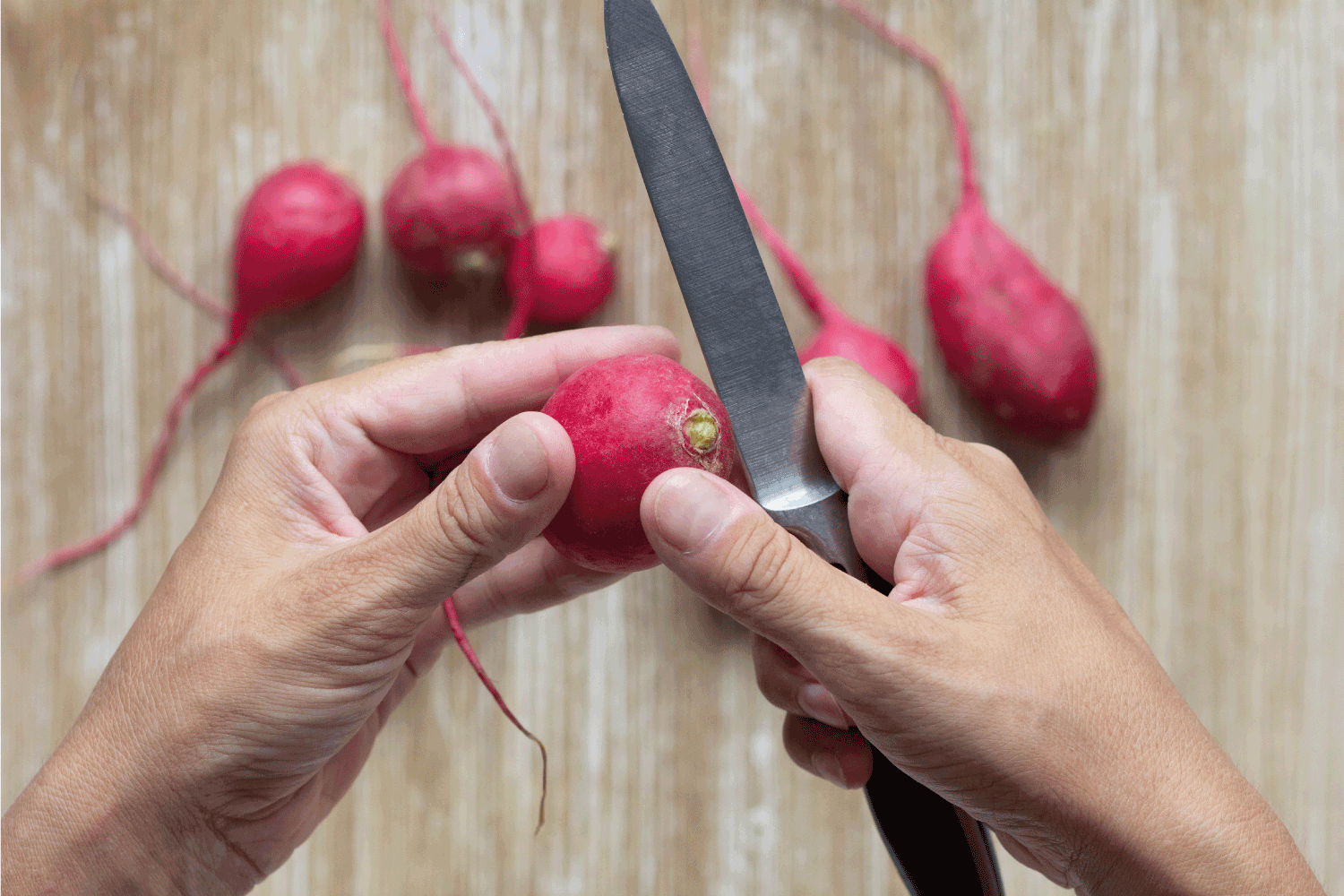
Let's look at a paring knife's effectiveness at breaking down tough cauliflower or broccoli stalks, for example. You can easily trim with sleight of hand while keeping most of the stalks for consumption. You can also use it to core fruits and vegetables and trim tiny stems like those from herbs. This small knife lets you hold the food in your hand to prepare carefully.
Leaving a tomato core in your recipe could ruin the flavor of your finished meal by adding a tough and bitter taste. Removing vegetable cores is an ideal job for the paring knife, so you're recipes will be that more delicious! You can also quickly remove pits from peaches, for instance, or other fruits if you want a handy snack or a more appealing, sliced serving.
Similarly, you can use the same coring techniques with a paring knife to remove unwanted spots from a vegetable or fruit. Sometimes, fresh foods develop aging spots that do not look or taste good. You can read the post "What Is The Best Knife For Chopping Vegetables?" if you're looking for less detailed preparation with vegetables.
Can a paring knife cut meat?
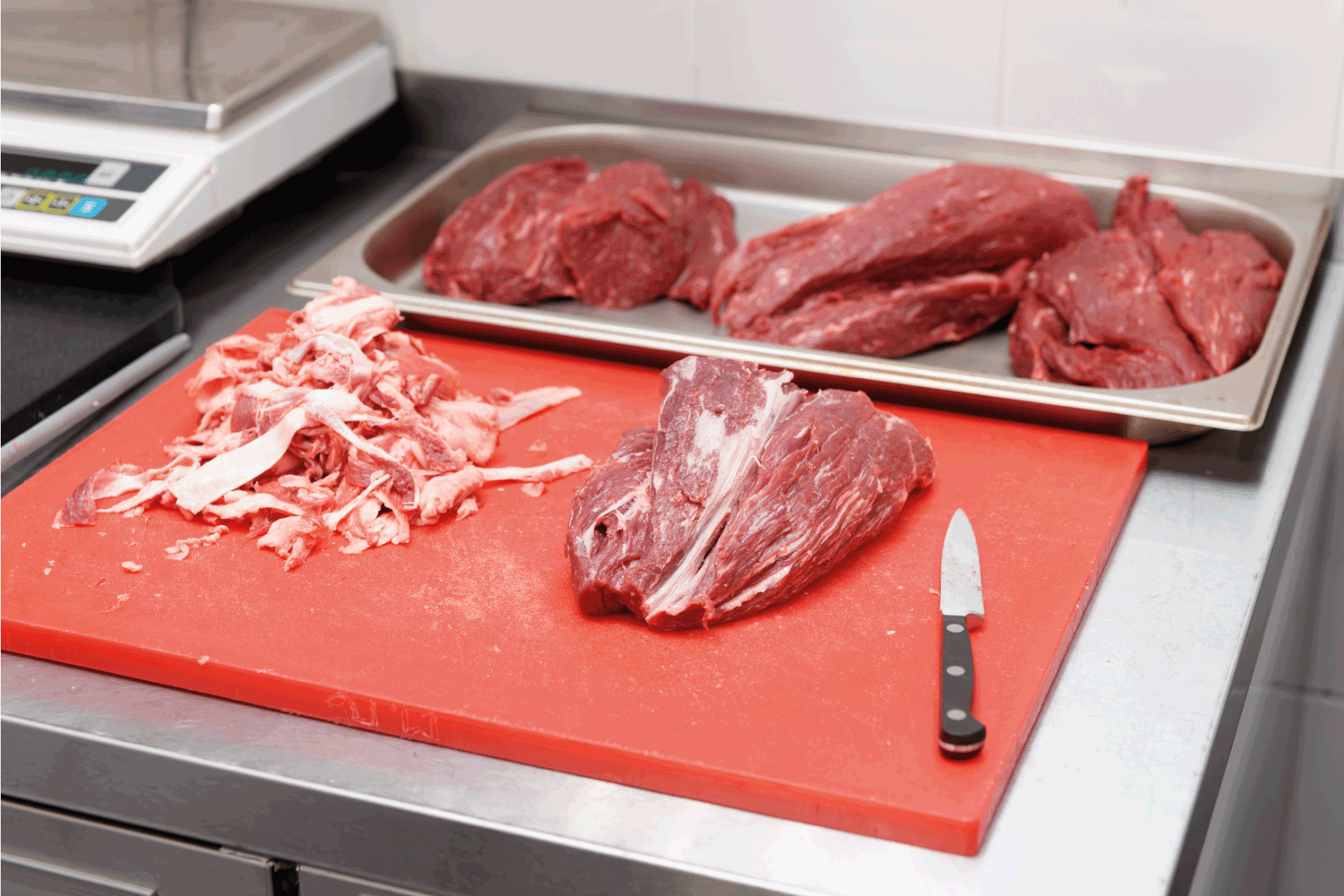
You can use paring knives for certain butchering tasks. The sharpness and size of a paring knife make it uniquely fit to carefully debone the meat and trim off fat.
You can use the tip of the paring knife to prepare meat. That is a unique and important ability because it is always advisable never to cut bone with a knife. The tip of the paring knife allows you to collect as much meat as possible without damaging the utensil -or worse, cutting your hand.
Fine-tuning prep can be achieved with a paring knife, as with shrimp. Sometimes, shrimp have an obvious, black intestinal tract running along their backs. A paring knife can be especially useful for removing it. The process is also known as deveining a shrimp, and it requires the precision offered by a paring knife.
Do you really need a paring knife?
A paring knife is frequently considered one of the most important blades in a kitchen because it is uniquely suited for handheld jobs. If a recipe requires you to handle a small piece of food, you will need to be more hands-on.
Therefore, you are more likely to be vulnerable to injury no matter what kind of knife you use. The design of a paring knife could potentially save you both time and injury when cooking with smaller foods. And because the paring knife is so versatile, it can also save you from purchasing extra cutlery or appliances.
Do you need an expensive paring knife?
Click here to find this Wusthof paring knife on Amazon.
As with any kitchen utensil or appliance, it is important to consider your own level of expertise and interest. Remember that because they are small, paring knives are easy to misplace throughout the kitchen. Often, it can help to have at least a few paring knives on hand. In this case, affordable options are ideal.
However, a paring knife that is pricier will probably be made durably with other valuable qualities. For example, it may not need to be sharpened as often, as the blade could be thinner or sharper. You can read the post "How Often To Sharpen Kitchen Knives?" to learn about proper sharpening habits.
Click here to find this knife sharpener set on Amazon.
Sometimes, it can help to balance out your kitchen to purchase one expensive paring knife for difficult jobs and cheaper paring knives for everyday use.
How often should you replace knives?
Even moderate-quality kitchen knives can survive for an extended period of time and rarely need to be replaced. If the knives are properly cared for, it may not even be necessary to replace the knives at all. You can read the post "How Long Do Kitchen Knives Last?" to learn about the lifespan of different knives and how to care for them properly.
One of the few risks of an aged knife is a loosened handle. Otherwise, the main reason to replace a knife is from damage rather than age. For instance, it would not be useful or appropriate to use a knife of any kind when the blade tip breaks off. But this is particularly true for a paring knife, which can use its tip more frequently than other types of knives.
It is crucial to keep in mind that one of the easiest ways to damage a knife is to use it for the wrong purposes. This can compromise the knife's edge or even the rivets that secure the metal blade to the handle.
How do I make kitchen knives last longer?
There are a few things you can do to make your knives last longer than usual. For example, you can choose to hand wash the paring knife instead of cleaning it in the dishwasher. That is because the force and heat of the dishwasher can potentially dull a knife, given enough time.
You can also avoid damaging your paring knife by storing it properly instead of simply throwing it in with the rest of the utensils. This is likely to conflict with the other metal utensils, too, and cause chips on both. It is often best to invest in a knife block, which is a wooden block with slots for various kinds of knives.
Click here to find this knife storage block on Amazon.
Summary
A paring knife can be a useful tool, and the level of quality can change drastically. It is important to understand how to properly use a paring knife to remain safe and save time when you cook. Now that it is clear what the various benefits and disadvantages of a paring knife are, you will be able to make an informed decision if it is the right tool for you.





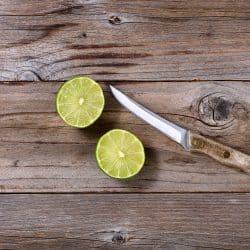
![Kitchen knife with black handle on wooden board made of beech. What Can You Cut With A Paring Knife [How About Meat]](https://kitchenseer.com/wp-content/uploads/2021/09/Kitchen-knife-with-black-handle-on-wooden-board-made-of-beech.-What-Can-You-Cut-With-A-Paring-Knife-How-About-Meat-250x250.png)
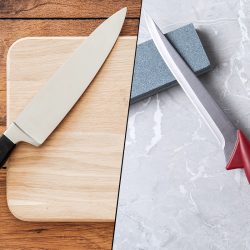
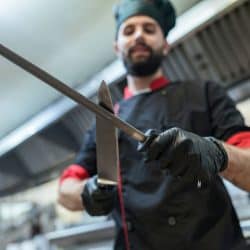
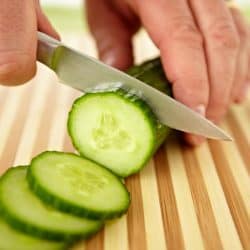
![set of cheese knives on a round wooden board. 14 Types Of Cheese Knives [Inc. What Cheese They're Good For And Why]](https://kitchenseer.com/wp-content/uploads/2021/07/set-of-cheese-knives-on-a-round-wooden-board.-14-Types-Of-Cheese-Knives-Inc.-What-Cheese-Theyre-Good-For-And-Why-250x250.png)